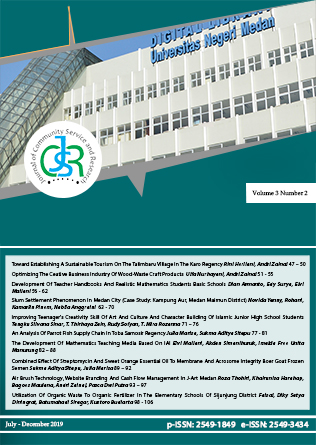AN ANALYSIS OF PARROT FISH SUPPLY CHAIN IN TOBA SAMOSIR REGENCY
DOI:
https://doi.org/10.24114/jcrs.v3i2.12151Abstract
Proper supply chain management in tilapia commodities in Toba Samosir Regency is needed to add value, maintain stock and quality, and can be easily reached by consumers/ communities. This study aims to determine the production process, analyze the actors involved, and analyze product flow, money flow and information flow in the tilapia fish supply chain in Toba Samosir Regency. This research is a qualitative descriptive study. Data analysis method is carried out in several steps: 1) Data Collection, 2) Data Reduction, 3) Data Display, 4) Drawing Conclusion and Verification. The results of this study are 1) Tilapia fish production process in Toba SamosirRegency is carried out with two systems, namely the first fish cultivation is done starting from the nursery and the second is cultivation for enlargement. 2) The actors involved in the supply chain system for the freshwater fish industry in Toba Samosir Regency are Fish Cultivators, Collectors, Diluents, Fish Processing Industries, Consumers. 3) There are product flow, money flow and information flow in the supply chain of the freshwater fishing industry in Toba Samosir Regency. Product flow flows from upstream to downstream, financial flow flows from downstream to upstream and information flows flow in both directions.Keywords: Industry; Supply Chain; Tilapia; Toba Samosir Regency.Published
2019-12-24
Issue
Section
Articles
License
Authors who publish with this journal agree to the following terms:
- Authors retain copyright and grant the journal right of first publication with the work simultaneously licensed under a Creative Commons Attribution License that allows others to share the work with an acknowledgment of the work's authorship and initial publication in this journal.
- Authors are able to enter into separate, additional contractual arrangements for the non-exclusive distribution of the journal's published version of the work (e.g., post it to an institutional repository or publish it in a book), with an acknowledgment of its initial publication in this journal.
- Authors are permitted and encouraged to post their work online (e.g., in institutional repositories or on their website) prior to and during the submission process, as it can lead to productive exchanges, as well as earlier and greater citation of published work (See The Effect of Open Access).
- This work is licensed under a Creative Commons Attribution-ShareAlike 4.0 International License.
This work is licensed under a Creative Commons Attribution-ShareAlike 4.0 International License.


